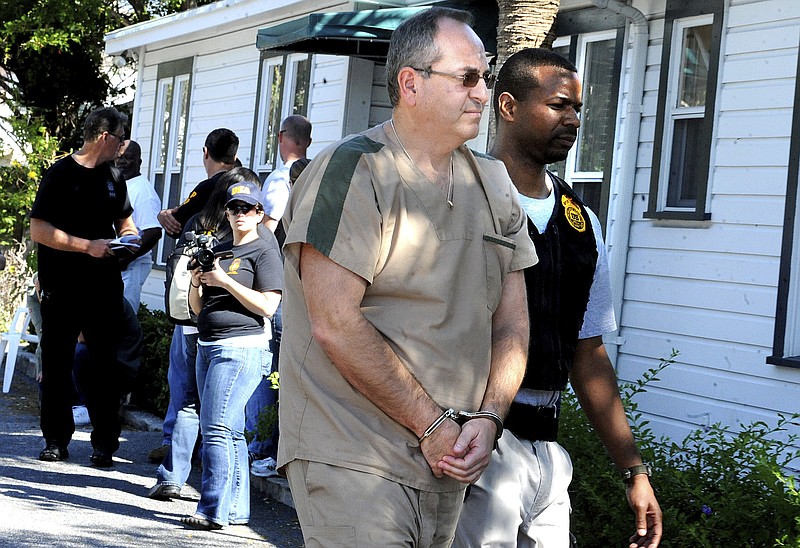FORT LAUDERDALE, Fla. (AP) — Florida survives on tourism, but a decade ago thousands of visitors made frequent trips to the state not to visit its theme parks or beaches. Instead, they came for cheap and easy prescription painkillers sold at unscrupulous walk-in clinics.
For a while, few in authority did much about it even though it was all done in the open with little oversight.
The clinics started in the 1990s and began proliferating in about 2003, their parking lots filled with vehicles sporting license plates from Ohio, Kentucky, West Virginia and elsewhere. The customers were drawn by billboards on southbound interstates advertising quick and easy relief — code for “We’re a pill mill and we’re ready to deal.”
The clinics’ doctors did no diagnostic work. They just signed prescriptions and shuffled the “patients” to the clinics’ onsite pharmacies to buy oxycodone and other narcotics at $10 a pill, cash-only. Some pill-mill tourists would visit a dozen or more clinics before returning home with thousands of pills, which would be sold to their neighbors for up to $100 each. Within a few days, many again headed south to buy more.
The thriving “pill mills” helped seed an overdose epidemic that ended up devastating many of the communities where the pills were sent. This week’s release of federal data showing the flow of prescription opioids throughout the U.S. from 2006-12 has again put the spotlight on Florida’s pill mill industry, which in hindsight provided a blaring fire alarm about a crisis that eventually would claim tens of thousands of lives every year.
“You could think about the manufacturers as having lit the fire, and the distributors and pill mills were really pouring gas on the fire,” said Andrew Kolodny, who researches addiction at Brandeis University.
Lindsay Acree, an assistant professor at the University of Charleston in West Virginia, said the pipeline to Florida provided easy access to large quantities of the drugs for people who already were getting hooked on them.
“It was very, very accessible and very, very cheap if they got them from Florida,” she said.
By the clinics’ peak in 2010, 90 of the nation’s top 100 opioid prescribers were Florida doctors, according to federal officials, and 85 percent of the nation’s oxycodone was prescribed in the state. That year alone, about 500 million pills were sold in Florida. The number of people who died in Florida with oxycodone or another prescription opioid in their system hit 4,282 in 2010, a four-fold increase from 2000, with 2,710 of the deaths deemed overdoses, according to a state medical examiners’ report.
Even today, Florida struggles with opioid addiction. The state was second only to Ohio in the number of opioid-related overdose deaths in 2017, the most recent year for which official figures are available.
Florida’s pill mills “opened fast and furious because there was very little regulation … and the majority of law enforcement was not trained to handle the movement of legal drugs for illegal purposes,” said Lisa McElhaney, then a sheriff’s narcotics investigator in Broward County, the epicenter of the pill-mill boom.
“Our laws were geared toward your traditional street-level drugs — cocaine, heroin, marijuana, methamphetamine — and not so much on prescription drugs.”
Ohio drug dealer Gerald Dixon said during a 2012 prison interview with the Associated Press he would visit Florida clinics, tell the doctors that years of weightlifting and boxing had left him in pain, and then they would prescribe him pills, usually without examination. He would take the pills home to sell.
“It’s all about cash, cash, cash,” he said then about the pill-mill doctors. “You go, you pay the money, and they’re going to come back and say, ‘Yeah, you’re right, you was hurt.’”
A perfect storm helped Florida pill mills take off in the early 2000s, said McElhaney, who is now president of the National Association of Drug Diversion Investigators.
Other states were putting in computerized systems tracking the sale of legal narcotics, but Florida did not. That allowed unscrupulous operators to go undetected. The state also allowed doctors and clinics to sell the drugs they prescribed.

